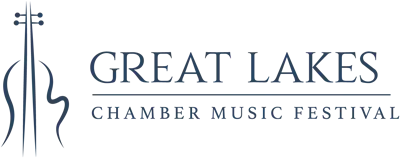Textures
Thursday, June 12; 7:00 PM
Ty Bouque
—
Texture is about the particular way things feel; etymology, then, might be thought of as a kind of exercise in historical textures, the way sounds accrue intuitive feeling in the fabric knit by language and the world. Reading across etymology is a way of seeing how texture connects the most unlikely of cohabitants.
One word, then, but three definitions.
Tract is spatial in its first sense: 1) tract, from the Latin trahere, draw, pull: an endless swath of ground. In early 19th century England, however, a bastard derivation of the word tractate (meaning treatise), its root in the Latin tractatus, made tract into a nickname for 2) a short pamphlet on a single subject, the kind passed around by religious fanatics or political hawkers in the streets at Charing Cross. Much earlier (and much less frequently) Roman Catholicism borrowed the Medieval Latin phrase tractus cantus to mean, in the liturgy at least, 3) a drawn-out song. Apt that so protracted a series of definitions can be given for a word whose root means drawn, pulled.
—
Begin with the shortest of the three, short not by designed concision but by poor attention. Schubert never really had it in him to finish his grand plans, and today the String Trio is missing its last two movements: they’re not lost, he just never wrote them. All we have is the brief first and some twenty-off bars of a sketch for number two. (Schubert had, in fall of 1816, just left his stifling academic post, fled his overcrowded family home, and moved in with Franz Schober, a rather handsome poet with a wide circle of well-to-do artistic friends; there was much to be distracted by.)
This is our short pamphlet on a single subject. The String Trio in B-flat major—or what we have of it—packs into its little space an exceptionally convincing argument: the difference between the arpeggio and the scale. The whole flux of the movement is generated by a tension between competing patterns of motion. Often arpeggios ladder upwards, they’re already in the second bar of the melody. Scales, meanwhile, tumble down, and they pick up pace as they do so until all three strings are scattering in bursts of stepwise descent. And they play to musicians’ strengths (in the same way a religious pamphlet might
tap innate morality): what string player has not spent their life practicing three octave scales and arpeggios? So while there are melodies and harmonies between, the entire movement of the trio can be understood as one composer’s intellectual excursus into the varying attractions, directions, and devotions of these two most elemental musical objects.
Joan Tower’s entire career is, to some extent, a long, drawn-out song, but not in that Wagnerian endliche Melodie sense. Tower’s art is to draw song out of earthen materials, to summon and bewitch the natural world to pour forth in sudden lyricism. Her usual recourse to natural metaphors in her titles—attendees of last year’s festival will remember particularly stony music—are overt references to the beginnings of her sonic imagination: her harmonies and sounds mirror phenomena and colors from the wild. This year’s new work, however—co-commissioned by the Great Lakes Chamber Music Festival—harkens toward the arrival: To Sing or Dance is where Tower’s music is always headed: to make the earth sing; to make the sky dance.
A geographical tract is of indefinite extent: it is never given just how far it can stretch. The Shostakovich Piano Trio No. 2 is a work of grief, and as such, faces off against that endless swath of world-without-you that those who’ve lost know all too well. The death of Ivan Sollertinsky, closer friend to Shostakovich than anyone, interrupted the composition of its first movement. He was 41. In the wake of the news, the composer cried out: “it seems to me that I will never be able to compose another note again.” Writing paused accordingly, while grief set in. Work resumed later in the fall, by which time the trio was already dedicated to Ivan.
Though the first movement preceded the precipitous loss, the first notes set an unbearably open space, fragile, hovering—only to fill it in with the Russian folk verve that its composer had originally intended the work contain. It’s not until the second movement—properly written in grief’s wake—that mourning as a spatial phenomenon takes real hold. The immense, unbearable duration between piano attacks gives the key: it is the time of waiting, the stretch of infinite that unfurls without end, that will be the rest of this work’s concern.
Grief always takes the form of a duration. Viewers of Michael Haneke’s cult film Funny Games will remember that the most violent episode of grief involves no camera or physical motion at all: it is a still tableau, the longest in the film. Only the light moves: grief is an illumined duration.
So too in Shostakovich: the two movements written in death’s wake do not go on. There is no catharsis or solution. They do not move. They sit and observe as pain floods like light. In the second: the endless cycle of overlapping melodies, too much emotion to hear clearly, vision wet from mourning. In the third: the unendurable string insistence, the same rhythm hammered out again and again, ceaseless and violent, thick walls of sound whose pressure only gives way to pressure. And the ending: continuous cadence that will not close, refusal to end, inability to stop.
The contradiction: a tract which is intractable, impossible to bear.
